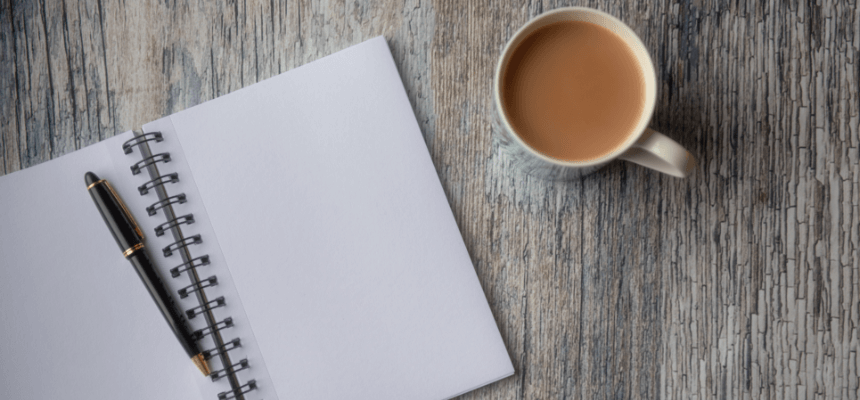- HOME
- Productivity
- How to optimize your routine for creativity when working remotely
How to optimize your routine for creativity when working remotely
- Last Updated : November 11, 2023
- 2.5K Views
- 5 Min Read

Being creative is a habit. One that is built over a period of time with consistent effort. When we’re working remotely, we have the best opportunity to dedicate time and effort to finally make creativity a part of our lives. Without the strain of commuting and meetings that drag on forever, we have that much extra time on our hands to use for creative work. Here’s how we can make the most out of that time:
Creativity isn’t fancy
While it’s essential that we free our minds to allow ideas to come in, creativity isn’t a magical process that happens spontaneously. Yes, a new room or somewhere in nature might help. But that doesn’t mean you need to travel halfway across the world just to get inspired. Inspiration might come or it might not. What’s stopping you from being creative isn’t inspiration or the inability to travel, it’s often not knowing how to start, and expecting a little too much before even getting started.
We’re all innately creative, but creativity is also a habit. And if we do the work, we can build on it, right from our homes—or wherever we are. This reframe is required in order to start building our creativity muscle when working remotely.
Being productive at work
We’re going to be practical in developing this new habit. We’re going to give it the time, energy, and focus it deserves. In order to do that, we need to first be as productive as possible in our work. It doesn’t matter if we’re looking to be creative at work or something outside of it, as long as we’re employed, work remains our primary responsibility. But there’s nothing worse than working all day, only to be too exhausted to do anything fun after. This new habit of creativity requires energy and focus. Being productive, efficient, and quick at work is a way to ensure it.
Fortunately, there are enough collaboration and productivity apps on the market to help us out. Take an app like Zoho Assist, which not only helps in remote troubleshooting but can also come in handy during creative collaborations. When you’re collaborating on a design and want your colleague to work on the same file, you’d usually need to talk about installing various software and plugins, not to mention making changes to the file itself. However, if you use Zoho Assist, you can do all this for your colleague remotely, saving time for both parties involved.
Meetings can be as concise or elaborate as required. Using an app like Cliq, you can start virtual conference rooms, share your screen, and even whiteboard for more interactive discussions. Focused chats around a topic could also happen in a team collaboration app like Zoho Connect.
To save even more time, we should ensure that we’re automating any and all kinds of programmable, recurring tasks. This may include adding information or contacts to a spreadsheet, notifying a group chat if an event occurs, scheduling a call for demo requests, and much more.
Making smart lifestyle choices
Being creative is a lifestyle. One that requires commitment more than it requires travel or exorbitant spending. We’ve talked about how creativity is a habit that can be acquired by discipline, and how being productive at work saves time that can be used for creative pursuits. The natural next step is having a lifestyle that, if not enhances, at least doesn’t deter creativity.
This might appear to be very simple but requires the most discipline. It’s eating the right food at the right times and getting enough sleep.
When you’re working remotely, recognize that it’s an opportunity to build a lifestyle centered around creativity. So the last thing you want is your health not cooperating. This simple habit of eating right and getting enough sleep will help you feel good throughout the day. It’ll also ensure that your health and mood support your creative pursuits instead of hindering them.
Doing the work
When you finish your work on time, have the right mindset and are feeling good, it’s time to start doing the actual work. You’re going to have to decide what you want to do, which might then involve some research for your project. Some amount of reading is essential, but if you have enough clarity on what you’re going for, then you’ll know exactly what to research and how much of it you should be doing. This research will serve as a break from the actual creative work when you’re blocked.
And blocked you will be.
Whether you’re writing a sales page, a novel, or coming up with a new design, it’s not going to be easy at first. Resistance is natural. This is why it’s important to make this process so easy that it’s hard to fail.
For example, if your objective is to write a blog post, writing just two or three sentences a day is a win. Initially, the focus should be on consistency, rather than quality or the amount of work done. You’ll do more and better work if you stick to the process of sitting down to write every day.
You can either use a habit tracking application or mark up a monthly calendar to track your progress. Once you get a nice daily streak going, it’ll be an additional incentive to sit down to work. However, it’s important not to just do research during your allocated time for creativity. While it gets you in the zone, it doesn’t work the creative muscle.
Just remember—all you need to do is to sit down to do the work.
Sharing your work
Sharing your design, presentation, video, or essay with the world will be nerve-racking, but it’s the only way to learn and make progress. Putting your work out there doesn’t only attract praise and criticism, it also provides you with an opportunity to connect and get feedback from other creatives who’ve been honing their craft longer than you have. Learning from them is by far the fastest way to get better.
However, for them to take you seriously enough to give you honest feedback, you’ll have to be doing the work and sharing it on a consistent basis. In other words, you need to prove to them that while you may not be at their level yet, you still belong in the arena.
That’s why a decent amount of consistency is required, especially when you’re starting out.
Being a student of your craft
When it comes to creativity—and most things in life—real learning happens through experience. We live in a world where there is content about almost everything. It’s easy to experience a faux feeling of satisfaction after binge-reading articles on design, sales, or writing. Consuming content hardly counts for much if not applied in practice. It’s simply a vanity metric. And the same goes for this article, too.
Start practicing your craft. Then you’ll know clearly which books to read and which podcast to listen to. Don’t get into the trap of discussing the craft without practicing it. Ask any software developer how they learned programming. They’ll tell you they learned the most when they built their first app or website. When it comes to programming, it doesn’t matter if you’re a school dropout or have a master’s degree. Learning by doing is the only way.
So be a doer. You’ll develop a healthy curiosity that will allow you to keep learning and improving yourself. Studying will cease being a separate thing—rather, it’ll be something that happens as part of the creative process.
 Karthick
KarthickContent Marketer for Zoho Flow. Passionate about helping businesses make better use of technology.


